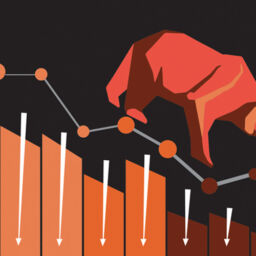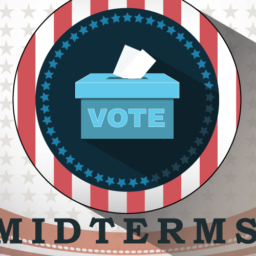
Perception vs reality—the shifting nature of the truth based on context and experience
~By Michael Schmanske
Have you been following the FTX collapse? Amazing story about the fall of a Bitcoin billionaire with all of the incredulity and schadenfreude you’d expect. I won’t cover it here. Matt Levine at Bloomberg has been doing a far better job than I could.
I’d like to talk about something “bigger.” Nine months ago pundits covered crypto currencies with breathless awe, yet now claim that they knew all along that this would end badly. The thing is—for some of them at least—this is TRUE. Ie. they were supporting a market and a product while at the same time voicing concern. Why does that happen?
Welcome to the Jungle
It is a basic fact of human nature that we derive our values from social cues. Different academics have different terms for this. I’ll call this the “validation effect” and it is caused by our primal need to fit into a tribe. We see this when choosing a mate: Does her family approve? It is why we look where other people are looking: What does he find so interesting? Children are admonished against it: If all of your friends jumped off a bridge, would you? While their parents are openly hypocrites: What will the neighbors think?
We need our Monkey Brains. They make social interaction possible, smooth our way in complex situations and provide important shortcuts in decision making. We actively rely on third-party consensus as a primary input to guide our own values. We simply do not have the bandwidth to make a complete decision with all of the facts every time. So we use shortcuts including social cues. Unfortunately with great power comes great responsibility (to quote Stan Lee). Sometimes our instincts create negative social outcomes via prejudice and “group think” but we attempt to overcome them via intelligence and awareness. So let’s add some intelligence and awareness to our investment decisions.
Popularity, fame, politics, even physical attractiveness are driven by crowd dynamics. Why would we believe financial markets and asset prices are any different? In past blogs I’ve described the idea of speculative pricing as a function of monetary excess and I introduced the concept of the Keynesian Beauty Contest. If market prices are determined by supply and demand and the demand is driven by consensus, then what information exists in those prices?
The Fiction of the Efficient Market
Broadly, the Efficient Market Hypothesis is that as long as market participants can freely buy AND sell at any time with little or no friction, then all of the information available to all market participants is fully reflected in the current market for that asset. (Note that rare assets, markets with high transaction costs and real estate are all good examples where this does NOT apply.)
But as we already know, we DON’T always make decisions based on all of the information at hand. Very often we take shortcuts, we assume somewhere out there are a group of people (the arbitrageurs) working to keep prices in line so that we can be lazy and just accept the “market price” as the correct one. Or we don’t even think about it at all, because most of the time it works. (Once again I realize I’ve uncovered a whole additional class topic on the importance of the free flow of information. I’ll have an entire finance course {Unaccredited} by the time we are done.)
To be an efficient market we need those arbitrageurs made up of contrarians and experts to do the work. But what happens when the market is overcome by speculative fervor? Experts are ignored, contrarians are openly ridiculed or even threatened and generally otherwise sane markets act quite irrationally. That is the secret of the meme stocks—once again the financial innovators managed to recreate past mistakes in a new and refreshing way. This has always been true in markets. Welcome to the animal spirits: There’s a reason we talk about Bulls and Bears. There is even a trader’s maxim, “The markets can stay irrational longer than you can stay solvent.”
If the market was truly efficient then there would be no difference across investor returns and asset allocation would be pointless. But we know this is not true. Investment returns vary widely. So at times we KNOW asset prices are “wrong,” but the analysts and commentators get trapped by the market price and so they create a narrative to support reality.
Holding Out for a Hero.
Alan Greenspan famously said that you can’t be sure if a market is in a bubble until it pops. This is unfortunately similar to the quote about pornography. “I can’t define it, but I know it when I see it.” The aphorisms are true and figuratively illuminating but of no practical use whatsoever.
That is also the bulk of financial journalism. Half of them are play-by-play commentators and the other provide color. But it is the rare individual that can tell you what is going to happen or why it just happened (cheers to you Tony Romo and John Madden!). There are a few analysts or strategists that I like and trust, but most of them still become captives of the Efficient Market Hypothesis.
For nearly two years from the bottom post-pandemic to the peaks this January, financial analysts and commentators attempted to justify the price activity in meme stocks, crypto currencies, SPAC’s and speculative tech. They projected further into the future or created entirely new valuation metrics like price to sales ratios. Companies were disrupting existing markets and the dinosaurs should just step off and make room for the newcomers. “Move fast and break things!”
Then when markets turned as interest rates started to move higher they invented entirely new economic models to explain the new price action and why those asset prices were declining. (See my blog “Stop saying growth stocks are highly sensitive to interest rates.”) Now FTX is going bankrupt and the crypto winter looks more like an impending march of the Night King across Westeros. Suddenly analysts are springing up and dusting off their old models to point out how they always knew this would end in tears. And maybe they did! But they were long ago drowned out by the HODL’ers and the price action eventually beat them into submission.
Great story Mike, and… what does that mean?
What to Do, What to Say?
Be careful when professionals back fill their description of why the market is acting as it is after the fact. (Ok, not just financial advice, but advice in general about the wisdom of Monday morning quarterbacks). In financial markets the habit is particularly harmful since the stakes are high and the individuals are very highly educated. But smart people get fooled too, and when they do it is very damaging since they can provide the best arguments for their incorrect position, and bring everyone else on board the crazy train. I’m sure Modern Monetary Theory will continue to be debated for years even if our current inflationary situation is proof positive of its fallacy (natch’ another Academy course!).
This isn’t just about public markets, but all of those companies that fell into the momentum chase. WeWork achieved bubble status before it ever came public, FTX also. There is now a huge focus on just how bad of an entry point were all of those private venture capital investments? Masayoshi Son at SoftBank and the folks at Tiger Global will likely be drowning their misery in their cups this holiday season. So I suppose that brings me to the best lesson I’d like you to take away:
Modern Bubbles: The more the experts rely on longer time horizons or more “innovative” valuation models, the more likely the asset is overpriced. And the more “experts” that should know better accept the new paradigm arguments the worse that bubble will be.
(This is why Tesla is probably still overvalued, btw). I could probably shorten this further to “Avoid new vocabulary or valuation models.”
This is one reason why I prefer startups. While we might be speculating about the future, it is speculation we can define: adoption rates, payer hurdles or similar “known unknowns”. The models fit into existing known business and valuation models, we don’t have to twist ourselves into knots to explain the current price. Further, when we look at investment returns we need to model how much the company will be worth when acquired in total by a larger firm. At its heart, startup investing is the purest form of “Value Investing” since it relies on the acquisition value of the cash flows the business will generate.
To flip the argument:
Don’t invest in private companies to insulate you from market volatility in the downturns. Invest intelligently in private companies throughout the cycle to isolate you from volatility in BOTH directions since at least you know exactly what you are paying for.
…
Michael Schmanske is a 24-year Wall Street veteran with experience on trading desks and asset managers. He graduated with degrees in Aerospace Engineering from MIT and a Masters from Princeton University. Mike is the Managing Director for AngelMD Capital and runs research and Analytics at AngelMD where he is happy to exercise his inner nerd on a regular basis by supporting the most innovative entrepreneurs and cutting-edge medical startups.











